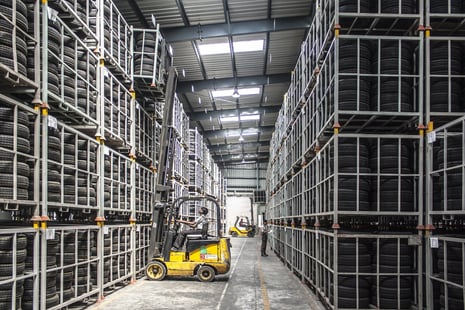Many wholesale distributors tend to view warehouse operations as a cost center due to labor, equipment, physical inventory, and real estate investments. However, with business models rapidly changing through e-commerce, omni-channel engagement, and innovative services, warehouse operations that are re-imagined through investments in technology can empower a company to gain a competitive advantage. Streamlining and automating processes across the warehouse improve customer and employee experiences and inspire customer loyalty.
A recent article featured in Forbes highlighted survey-based research on practice, priority, and expectation trends of warehouse executives. Respondents chose a warehouse management system (WMS) as their highest priority for technology investment with 96 percent of survey participants noting that the warehouse automation value proposition was expected to increase over the next 3 years. Survey findings indicated that operational changes like labor costs, labor shortages, and increased throughput requirements were all primary factors for companies looking to automation.
Common warehousing challenges
Warehouse directors understand the challenges most, if not all, distribution centers manage. These challenges cover a wide range of issues which include picking optimization, inventory management, operational strategy, employee management, returns, and much, much more.
Picking challenges
For example, a large amount of productivity is often lost due to insufficient item master data. Without the proper item and location slotting for concepts such as seasonality, promotional activities, and sales projections, poor inventory placement across the warehouse can result in increased costs and reduced productivity.
Furthermore, many companies lack visibility into inventory quantity and location accuracy due to a heavy reliance on spreadsheets, pick sheets, the absence of cycle counts, capacity constraints, or a lack of digital monitoring all together. No visibility into inventory quantities or throughput can result in declining fulfillment rates, stock outs & back orders, decreased service levels, and waning customer loyalty and sales opportunities.
E-commerce continues to change the game
While e-commerce has created numerous challenges and adjustments to warehouse operations for years, increases in e-commerce activity sparked by 2020 shutdowns and safety protocols have expedited the need for near-instant adjustments, scalability, and the introduction of new business models.
In order to match the speed of digital business, warehousing is expanding into localized areas as space previously utilized as storefronts is emerging as smaller, localized fulfillment centers. This allows the organization to offer curbside pick-up, same day delivery, and more. As newly adopted customer behaviors become permanent, more and more organizations will continue to explore and implement this model.
Persistent labor shortages
Prior to 2020, a warehousing labor shortage has been a consistent challenge. Many organizations are re-evaluating their headcount to meet demand and ensure enough employees are available if someone requires an extended absence. To adapt, organizations need to implement advanced scheduling strategies, employee health checks, and routine sanitation schedules to ensure safety measures are maintained in order to keep the warehouse running smoothly. Additionally, distributors are evaluating where they might introduce new levels of automation or a reconfigured process to streamline tasks and reduce redundancies.
Implementing a cost-to-serve model
As more customers expect specialized or customized services, the need to segment operations and evaluate cost-to-serve models can be the difference between sustainability and profitability. Determining what to charge for specific services and requirements is critically important. However, many organizations have yet to adopt a true cost-to-serve strategy and continue to render “blanket pricing,” leading to higher fulfillment costs and lower revenue.
Increased need for streamlined reverse logistics due to returns
As online orders increased, so have returns. The fulfillment costs, combined with the return management costs, will far outweigh the revenue associated with that order. In the case of returns, having a reverse logistics strategy to ensure items are properly marked for resell, repair, or recycle will maximize the product’s lifecycle and lower total cost.
While these challenges have been prevalent for several years, many organizations have yet to dedicate the necessary investment to address the issues head on. For organizations looking to improve the warehouse operations to drive additional value, now is the time to explore the right strategies and technology investment to take the necessary steps.
To learn how you can drive operational excellence in the warehouse, check out this complete best practices guide.
Learn more about how ICCG can help. Questions about how ICCG can help you? Let us know here.


